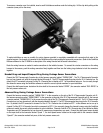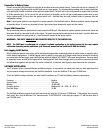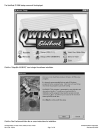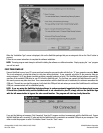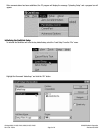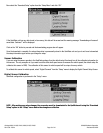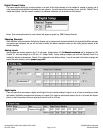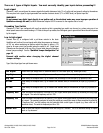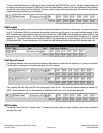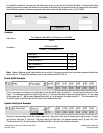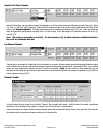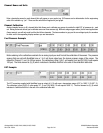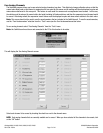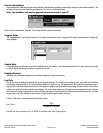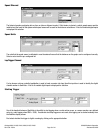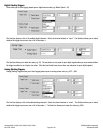
Page 13 of 44
Catalog #91001, 91003, 91004, 91005, 91007, 91009
Rev. 2/06 - RS/mc
©2006 Edelbrock Corporation
Brochure #63-0282
This 6-element table allows you to calibrate your sensor to provide the right MPH, RPM etc. read out. Having 6 elements allows you
to calibrate some non-linear sensors (e.g. GM mass air flow meter with frequency output), but for most applications (linear sensors),
you will only need to utilize the left two elements. The lower numbers in gray are the raw digital inputs, the numbers in white are the
corresponding display numbers you are interested in.
RPM Example
Before entering any numbers, you must first find out the calibration constants for the input you will be using. Let’s look at a tach input
for a V8. The maximum RPM for the calibration table should be higher than you will ever see. Let’s take the default example of 9000
RPM. A standard tach. signal provides 1 pulse every time a cylinder fires. At 9000 RPM, this is 600 pulses per second, or 600 Hz. The
input type is set as “Frequency Rise”. The first element contains the numbers (0), (0). This means that for a frequency of “0”, the RPM
should be “0”. The second element has the numbers (6), (9000). This signifies that for an input frequency of 600 (6 times 100), the
RPM should be 9000. The next number pair is (0), (0) which lets QwikData know that this is the end of the calibration data entry.
Shaft Speed Example
The following calibration values should be used to measure shaft speeds on a shaft with two magnets (i.e. 2 pulses per revolution).
This will result in a frequency of one half the tach signal in the prior example.
Thus, assuming the same 9000 max RPM, the input frequency is only 300 Hz. Thus the second element contains the numbers (3),
(9000). The third element is (0), (0) which indicates to QwikData that this is the end of the calibration table data.
MPH Example
The input type should be set to “Frequency Rise”. To measure the vehicle speed, you need to calibrate a speed sensor mounted on
the output drive shaft.



